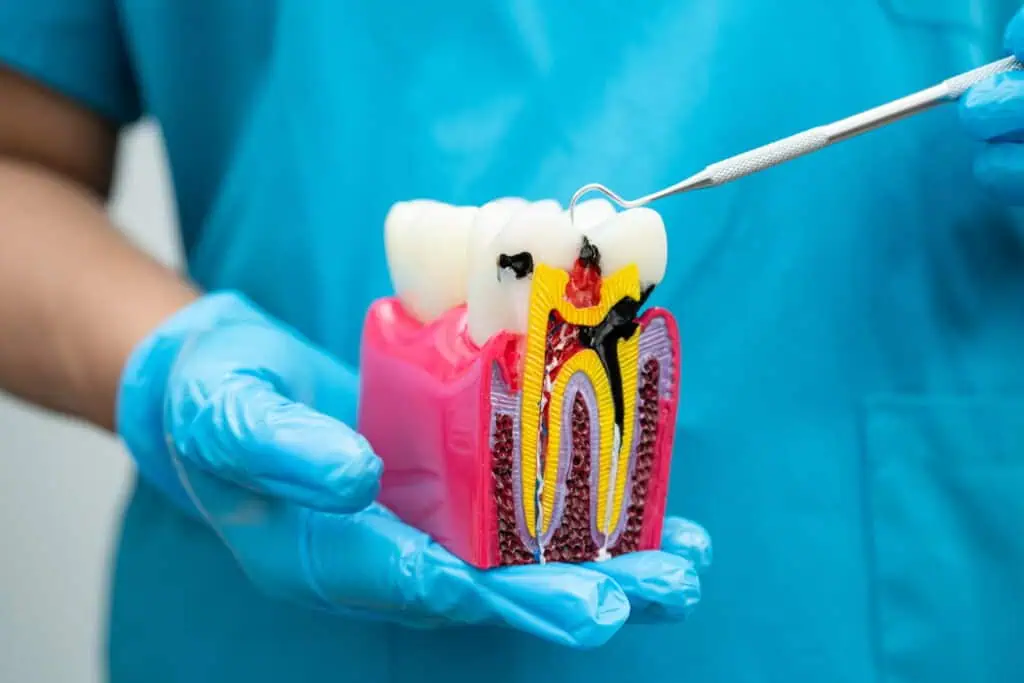Tooth deterioration and structural damage demand swift attention to avoid worsening oral health issues. A skilled dentist assesses whether a filling or a crown provides the most suitable restoration based on the extent of the problem. Fillings work effectively for minor cavities, but crowns deliver superior reinforcement for fragile or extensively damaged teeth. Understanding why a dentist may advise a crown instead of a filling empowers patients to make confident decisions about their oral well-being.
When a Dentist Determines a Crown Is More Effective Than a Filling
An experienced dentist evaluates numerous factors before recommending the ideal treatment. A patient with a substantial cavity might assume a filling will suffice, only to find out that a crown is the more appropriate solution. This guidance often catches individuals by surprise, yet crowns prevent long-term deterioration that fillings alone cannot address. Dentists examine decay severity, tooth durability, and the potential for future complications before reaching a decision.
- A filling lacks sufficient reinforcement for a severely compromised tooth.
- A crown extends the lifespan of a tooth by offering added resilience.
- Preserving the integrity of natural teeth remains a primary goal, and crowns support this objective.
Tooth Decay and Weakened Enamel
Smaller cavities typically require a straightforward filling, but widespread decay compromises the tooth’s stability. If too much enamel is eroded, a filling cannot provide adequate support to maintain strength. A dentist will opt for a crown when a filling alone leaves the tooth vulnerable to breakage or further damage.
- Cavities affecting more than half the tooth frequently necessitate a crown.
- Deteriorated enamel increases the risk of fractures and additional decay.
- Crowns restore the structural integrity of a compromised tooth where fillings fall short.
How a Dentist Uses a Crown to Reinforce a Weak Tooth
Crowns act as protective shields, encasing a compromised tooth entirely. This additional support minimizes further wear while restoring natural function. Unlike fillings, which replace only a portion of lost tooth material, crowns envelop the entire tooth, allowing patients to chew and speak without discomfort.
- A crown prevents cracks from worsening and leading to serious fractures.
- Crowns restore structural stability to teeth weakened by root canal treatment.
- Premium materials like porcelain and ceramic closely mimic natural teeth for an attractive appearance.

Why a Dentist Suggests a Crown for a Cracked or Broken Tooth
A fractured tooth is prone to splitting further, potentially leading to pain or even tooth loss. Fillings do not provide the necessary reinforcement for deep cracks. A dentist often recommends a crown to stabilize and protect the remaining tooth structure.
- A filling may not bond securely to a fractured surface.
- Crowns support cracked teeth, preventing breakage from spreading to the root.
- Strengthening a weakened tooth reduces the need for extraction.
Durability and Lifespan of Crowns Compared to Fillings
Fillings serve their purpose for several years, but they deteriorate faster than crowns. A crown provides a more durable, lasting solution for individuals requiring long-term restoration. Dentists evaluate a patient’s diet, oral hygiene, and overall dental habits when determining whether a crown is the superior choice.
- Crowns typically last 10 to 20 years or more with consistent oral care.
- Fillings often require replacement within five to ten years due to gradual erosion.
- Sturdy materials like zirconia and gold alloys offer enhanced resistance to wear and tear.
How a Dentist Matches a Crown to Natural Teeth
Modern dental crowns blend seamlessly with surrounding teeth, ensuring a lifelike appearance. Dentists use cutting-edge imaging technology to craft a precise fit, optimizing both comfort and aesthetics. Unlike older metal-based crowns, contemporary porcelain and ceramic options closely replicate the texture, color, and translucency of natural enamel.
- Custom-made crowns enhance the overall look of a restored tooth.
- Digital impressions create a precise, comfortable fit for improved functionality.
- Advanced shade-matching techniques ensure crowns integrate flawlessly with adjacent teeth.

Cost Factors and Insurance Coverage for Crowns
A crown costs more than a filling, yet many dental insurance policies cover part of the expense. Dentists provide thorough explanations regarding pricing, available materials, and flexible payment options before proceeding with treatment. Investing in a crown often proves more cost-effective over time due to its durability and protective benefits.
- Insurance plans frequently cover crowns deemed medically necessary.
- Fillings may seem more budget-friendly initially but often require multiple replacements.
- Crowns help prevent further complications, potentially reducing future dental costs.
Key Factors to Consider When Choosing a Crown Over a Filling
A knowledgeable dentist thoroughly assesses each case before determining whether a crown is the better option instead of a filling. The extent of decay, the tooth’s ability to withstand pressure, and the long-term benefits of each treatment option influence the decision-making process. While fillings address minor cavities effectively, crowns provide superior protection for extensively damaged teeth.
- Large cavities weaken tooth structure, making crowns a more reliable solution.
- Crowns offer enhanced durability and help prevent additional deterioration.
- Fractured or severely decayed teeth frequently require crowns for lasting reinforcement.
Frequently Asked Questions
Why is a crown recommended for a large cavity instead of a filling?
A large cavity significantly compromises the structural integrity of a tooth, removing substantial enamel. A filling alone lacks the necessary strength, making the tooth more prone to fractures and further decay.
How long do crowns last compared to fillings?
Crowns generally last between 10 and 20 years, whereas fillings may require replacement after five to ten years due to wear and tear.
Do all teeth that undergo root canal treatment require crowns?
Most teeth that have undergone root canal therapy need crowns to restore their strength, as the procedure removes a significant portion of the tooth’s natural structure.
Are crowns significantly more expensive than fillings?
Yes, crowns cost more due to their materials and durability, but they often prevent further dental issues, making them a valuable long-term investment.
Which crown material most closely resembles natural teeth?
Porcelain and ceramic crowns closely mimic natural enamel, offering an aesthetically pleasing and highly functional solution without the metallic appearance of older crown designs.







